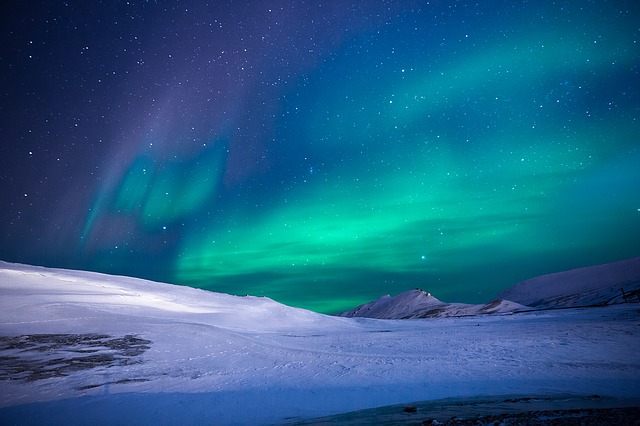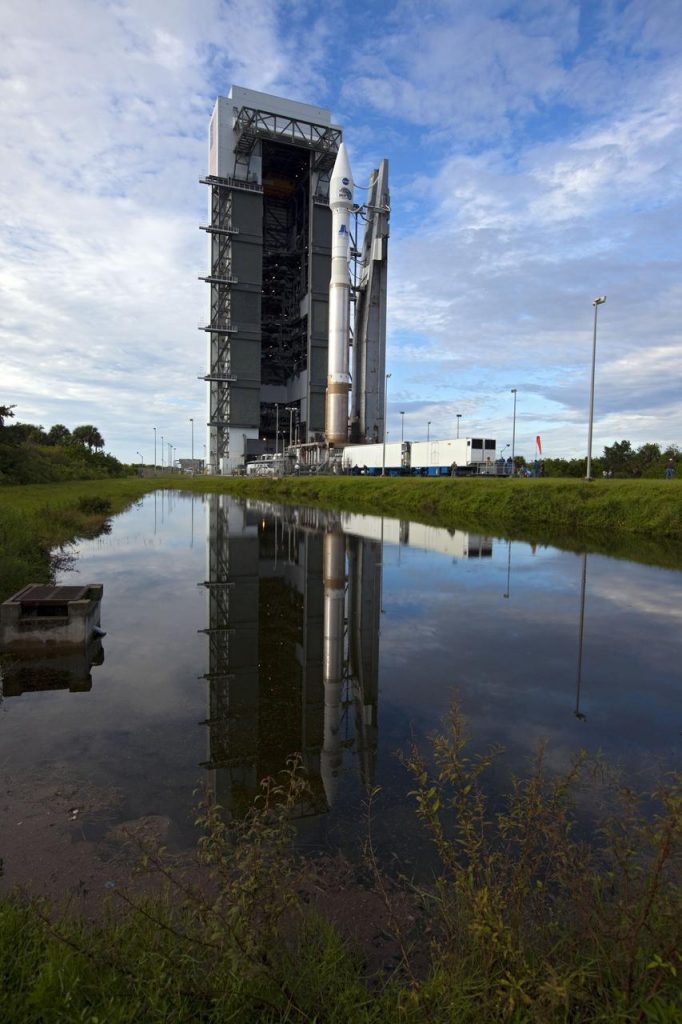On 23 November we’re welcoming NASA Astronaut Steve Swanson to campus to tell his stories about life in space. Here at Reading, Dr Clare Watt’s research looks at space weather and how that can affect the thousands of satellites currently whizzing around in orbit above us. Here she tells us about her job and what she loves about it.

Hello Clare. Can you tell us about your research in one sentence.
I like to think that I imagine my way around space, furthering understanding of how and why it is so changeable. That’s all thanks to generations of engineers and scientists that built spacecraft to explore the mysteries of our near-Earth environment.
What exactly is Space Environment Physics?
Our ‘space environment’ is, simply, the region of space around the Earth. It contains the orbits of useful satellites, like global navigation systems.
To me, the most important thing about space is that it is not a vacuum. In fact, space contains a very sparse, but energetic, population of high-energy electrons and protons. Their behaviour is controlled not by gravity, but by the magnetic fields generated at the Sun and other solar system planets.
By ‘very sparse’, I mean that in every cubic centimetre of space [roughly the same size as the tip of your little finger] around the Earth, there is just one proton/electron pair whizzing about. By contrast, there are around 25000000000000000000 molecules in the same volume of air wherever you are sitting right now.
So why do we need to do research into the space environment?
The high-energy electrons and protons are a hazard for satellites; when there’s more of them, the chances of sparks flying between parts of the spacecraft, or inside those parts, is increased. These sparks, known as electric discharges, can make the satellites malfunction and very occasionally we lose the satellite altogether.
Down here on earth we rely heavily on networks of spaced-based platforms, for example for communications or navigation. So we are trying to understand more about what causes changes in the high-energy electron and proton populations surrounding the Earth. That means I am also a space weather physicist (I don’t do any space weather forecasting though – I leave that to the experts at the Met Office!)
What kind of things do you do in your research?
I observe the effects of the high-energy electrons and protons using some very sophisticated kit: ground-based magnetic field instruments, auroral cameras, detectors on rockets and spacecraft, and space-based telescopes.
I work in the University of Reading’s Meteorology Department. That’s because I want to understand our space environment to the point of making predictions about conditions in space. These predictions could help satellite designers, operators – and maybe even insurers – make well-informed decisions about how best to manage their fleet.
Tell us about some of the people you work with.
The result of this mash-up of science I’ve described is that I have the opportunity to work with scientists and engineers from a wide range of fields – geophysics, plasma physics, astronomy, mathematics and meteorology. For me, collaborating with a wide range of smart and interesting people is easily one of the best parts about working in science.
And what are some of the other good bits about being a space environment physicist?

As a teenager, I never dreamed that a job such as mine existed. I’ve had amazing opportunities and experiences.
I’ve attended the launch of satellites at Cape Canaveral in Florida, where mind-boggling feats of ingenuity and engineering are accomplished above alligators, manatees and armadillos in a wildlife refuge.
I’ve watched dancing aurora fill the night sky above freezing Alaskan mountains and multi-coloured bright aurora shine right through the streetlights in Edmonton, Alberta. And I’ve seen green arcs stretch across the Finnish forests.
All this in addition to doing science, teaching science and enabling younger colleagues to do science. I am one of the lucky group of people that really enjoys my job.
NASA Astronaut and International Space Station Commander Dr Steve Swanson is coming to give a talk on his experiences at the University of Reading campus on Friday, 23 November. If you’ve ever wondered what it really takes to be an astronaut and what it’s like to go into space this is your chance to find out. Steve has flown on two Space Shuttle flights and Expedition 39 to the ISS aboard the Soyuz, logging 643 hours in space. He is a recipient of the NASA Exceptional Achievement Medal.
Dr Clare Watt is Associate Professor of Space Environment Physics at the University of Reading. She is on the Council of the Royal Astronomical Society and Chairs Division III of the International Association of Geomagnetism and Aeronomy. Her research aim is to build a next-generation physics-based model of the Outer Radiation Belt, with the ultimate goal of using it as a predictive model for space weather. She also has a long term interest in the physics of the aurora, and in using the aurora to remote-sense phenomena in near-Earth space. Clare’s research group can be found on twitter at @ORB_Reading
